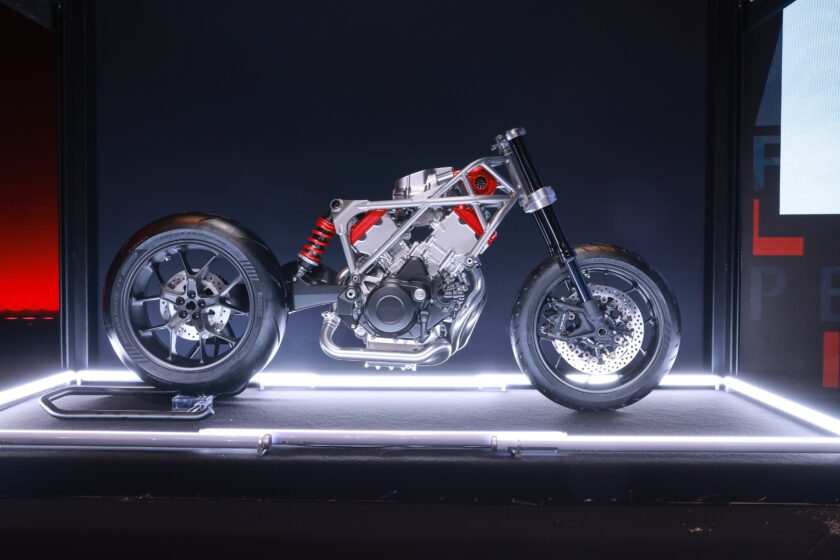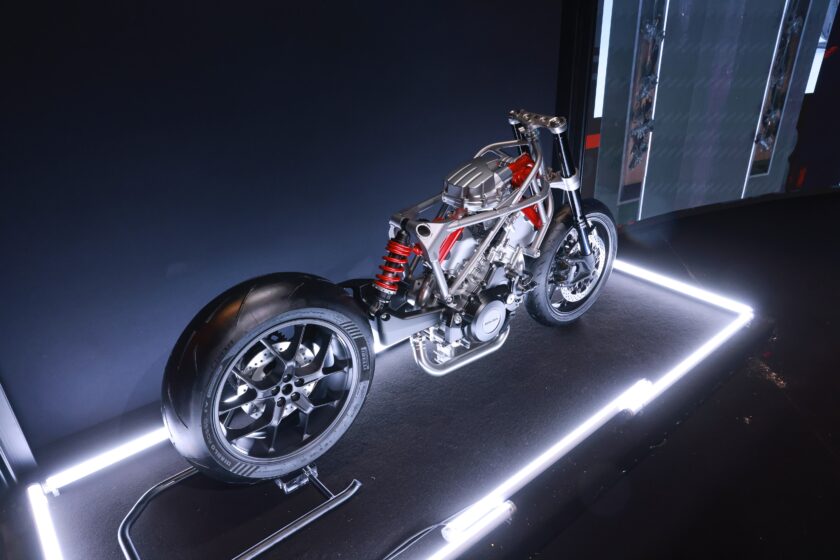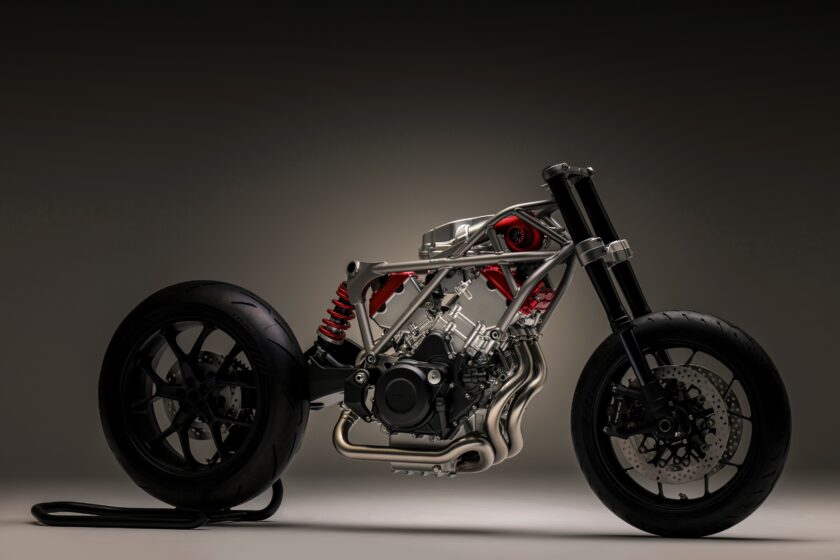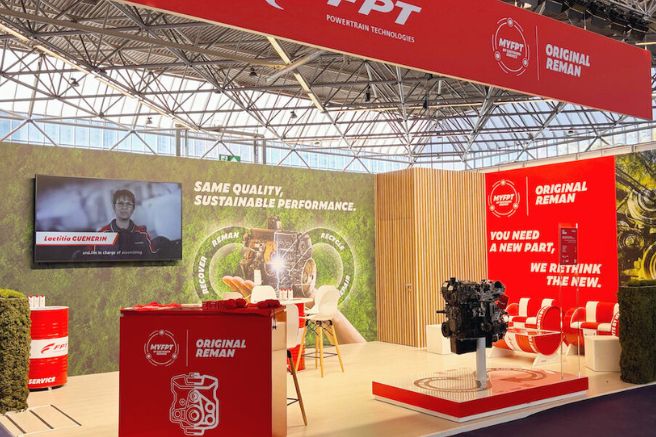
In 2010, Honda introduced the “DCT” (Dual Clutch Transmission), adapted from the automotive world, ushering in a technological evolution poised to replace mechanical gearboxes with robotic systems. With “DCT,” Honda solidified its image as a technically leading brand in the motorcycle world. However, since then, the company had not followed up with high-level innovative proposals comparable to the groundbreaking “DCT.” Now, Honda returns to its roots and regains a technological leadership position with the launch of a supercharged “V3” engine featuring an electrically powered centrifugal compressor, a technology matured through its role as an engine supplier for several Formula 1 teams.
The engine was presented housed within a tubular frame featuring a single-sided swingarm, though it remains unclear whether this frame is part of the final project or simply a display model for showcasing the new unit. With its 75-degree cylinder bank angle, the engine fits within the frame’s lattice, presenting transverse dimensions akin to a twin-cylinder engine and more compact longitudinal dimensions compared to traditional 90-degree V configurations. The architecture features two front-facing cylinders and one rear cylinder, all liquid-cooled, drawing design inspiration from Honda’s previous models like the “NS 500 R,” a two-stroke engine with one horizontal and two vertical cylinders at a 112-degree angle, and the “NS 400,” a two-stroke engine with two horizontal and one vertical cylinder at a 90-degree angle.

In this case, the engine is a four-stroke model with unknown technical specifications or displacement, and no information is available about the crankshaft phase timing. It is plausible that crank phases are arranged to avoid the need for counter-rotating shafts to reduce vibrations. While Honda states that the engine will power “medium to large displacement motorcycles,” it did not specify whether these will be touring or sports models—two categories requiring distinct design choices.
The compressor system is the engine’s most compelling feature. Operating electrically, it is independent of the engine’s RPM or exhaust gas flow, offering a broader range of torque modulation compared to traditional electronically controlled fuel injection and ignition systems, airbox volumetric modulation, and variable valve timing technologies.
One advantage of the “electric” compressor is its flexible placement, unaffected by mechanical linkages or exhaust pipe routing, as well as its greater responsiveness compared to traditional systems. Mechanically driven centrifugal compressors are rigidly tied to engine RPM, affecting their efficiency accordingly. Turbochargers, although somewhat less rigid in their operation, still depend on exhaust gases, necessitating variable geometry versions to mitigate turbo-lag issues in fixed-geometry systems. Honda claims the new engine’s compressor reaches operational speed in less than half a second, without requiring an intercooler to cool the compressed air sent to the cylinders. This suggests the compressor might function as a booster, engaging for peak acceleration or providing enhanced low-to-mid RPM torque beyond what a naturally aspirated engine would offer.
Some Reflections

The new Honda engine represents a significant technical achievement, poised to compete with the current market’s inline three-cylinder engines. Mechanically, it is notably more compact and better balanced, allowing easier placement of the vehicle’s center of gravity according to its intended use. However, the cylinder arrangement densely fills the rear frame section, potentially complicating the integration of a progressive suspension system. The presentation model showcased a fixed-geometry suspension relying on variable spring rates for elasticity progression.
Another concern is the absence of a visible battery compartment for powering the electric compressor. Expecting the alternator to directly handle this task seems unrealistic due to the high energy demands, which can be six to seven times higher than typical motorcycle alternator outputs. A 12-volt system is equally implausible. Instead, a small 48-volt accumulator capable of sustaining short bursts for the compressor seems more logical.
Lastly, the production costs for the new “V3” engine are expected to exceed those of inline engines. Combined with the electric compressor, this positions the engine for use in high-performance and prestigious vehicles. If Honda follows through with production, it will be intriguing to monitor future developments and applications of this groundbreaking unit, even if the timeline remains uncertain.
Title: With the V3 engine, Honda astonishes once again
Translation with ChatGPT



